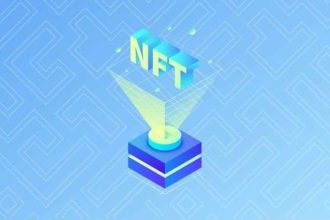The expansion of the CS2 economy has created a robust virtual marketplace built around digital cosmetics, more commonly referred to as skins. These aesthetic in-game items hold no intrinsic gameplay value but have acquired real-world significance through their perceived rarity and visual appeal.
As trading communities and third-party platforms matured, skins developed into assets capable of being exchanged, sold or wagered. This shift catalyzed the rise of an entire ecosystem of skin-related gambling activities, with roulette formats becoming a popular method of participation.
Mechanics of CS2 Roulette Platforms
Many players engaging in this space began playing CS2 roulette through third-party websites, where in-game skins are deposited and converted into site credits. These credits function as chips, used to place bets on spinning wheels divided into color segments with varying multipliers.
The simplicity of the roulette mechanic, combined with high-value cosmetic stakes, has contributed to its appeal. Algorithms managing the outcomes are often labeled as “provably fair,” meaning that platforms offer cryptographic methods for users to verify result authenticity. While this enhances transparency, skepticism persists regarding the accessibility and understanding of these systems.
Monetization and House Edge
Revenue generation for roulette platforms stems primarily from the built-in house edge. Each spin is mathematically weighted to give the platform a consistent advantage over time. The edge varies between platforms, generally falling within a 1% to 10% range, depending on design. Additional monetization techniques include withdrawal fees, skin depreciation models and paid premium features.
In some cases, sites also promote influencer partnerships or affiliate programs that drive traffic in exchange for commission—these monetization methods contribute to the financial sustainability of operations, even during periods of lower user activity. Here, site-hosted jackpots and tiered VIP programs further incentivize continuous play.
Regulatory Scrutiny and Legal Gray Areas
Skin betting continues to attract attention from regulators due to its unique position between digital entertainment and gambling. Although virtual items are not formally classified as fiat currency, their real-world value has introduced complex legal considerations. Jurisdictions vary in their interpretation, with some classifying the activity as gambling and others approaching it as a form of interactive online entertainment.
In 2025, several countries have introduced clearer oversight frameworks, requiring skin betting platforms to register under formal gambling licenses; meanwhile, others have opted for market withdrawal policies. At the same time, regulatory diversity across regions has enabled platforms to adapt through relocation or rebranding, allowing them to maintain accessibility and serve global audiences while aligning with oscillating standards.
User Demographics and Behavioral Trends
Recent data from market analysis firms in 2025 highlights that users of skin roulette platforms tend to be younger, digitally savvy and deeply integrated into gaming culture. Behavioral patterns indicate that players are positively influenced by social media marketing, streamer endorsements and community-led betting pools, creating an engaging and social experience.
Sessions are often characterized by quick, exciting wagers, resembling the fast-paced nature of traditional online gaming. Here, the use of visually stimulating animations and instant outcomes enhances user engagement, providing a dynamic and immersive atmosphere. While awareness campaigns are growing, platforms continue to implement age gates and disclaimers, promoting a safe and responsible experience for all players.
Security and Fairness Measures
To address persistent concerns around fraud and manipulation, many platforms now incorporate multiple layers of cybersecurity and automated auditing: advanced anti-cheat systems, real-time data encryption and third-party verification tools are increasingly standard.
Many websites provide transparency dashboards, enabling users to review transaction histories, win/loss ratios, and payout records, building trust and accountability. While most platforms prioritize these best practices, there is always room for improvement—efforts to address phishing, fake skins and unauthorized wallet access continue, with the ecosystem continually boosting security.
Economic Implications and Future Outlook
The digital goods economy connected to games like CS2 has far-reaching implications beyond entertainment. With skin markets generating millions in virtual asset trading volume each month, betting platforms contribute to a dynamic financial microstructure. Analysts in 2025 predict further integration with blockchain-based item registries and smart contract betting mechanisms, which promise increased transparency and innovation.
As these technologies develop, they have the potential to streamline oversight and promote a more secure environment. Whether skin betting will flourish as a regulated digital pastime or face further policy adjustments is an ongoing topic of discussion. Developers, regulators and consumer advocates are actively working together to shape its long-term impact and direct a positive future for the industry.















